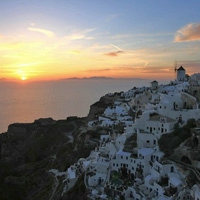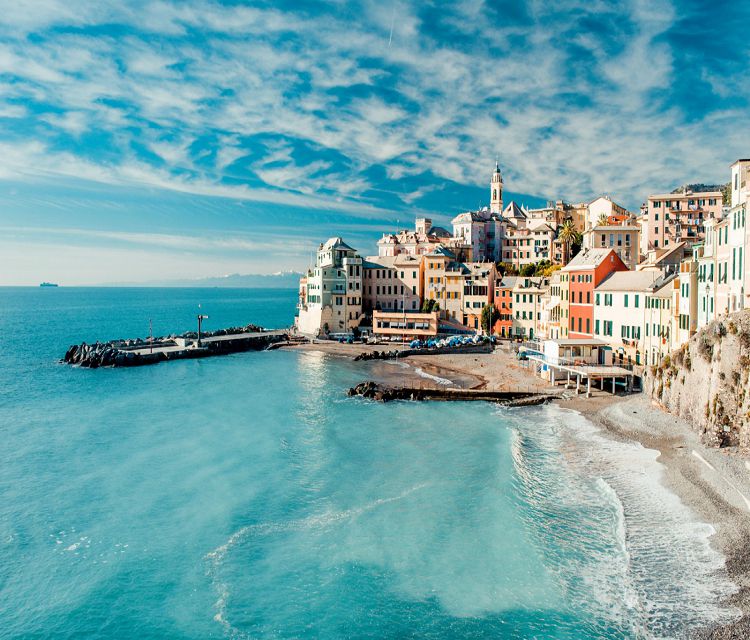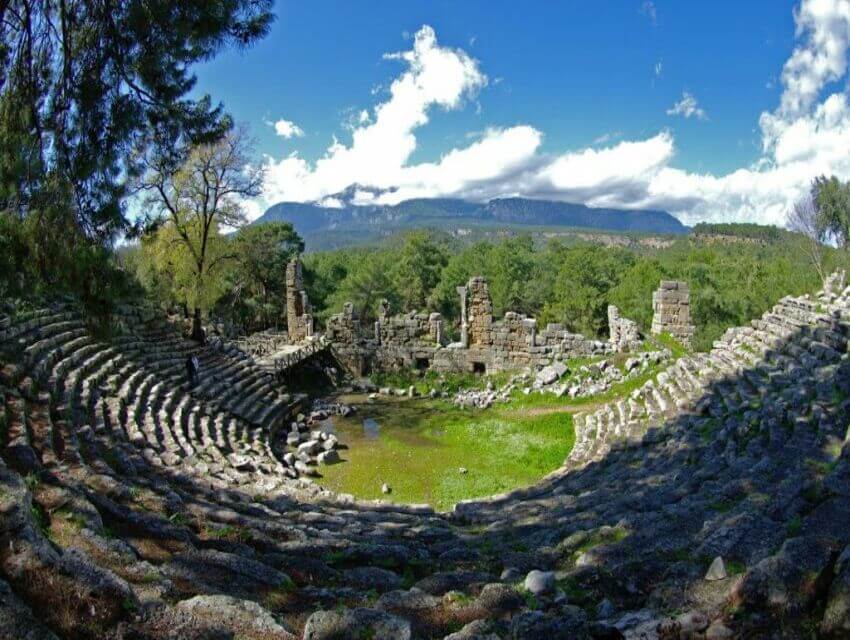Santorini – Mykonos: two clade Cyclades
 In the southern part of the Aegean Sea lies a scattering of more than 200 islands of the Cyclades Archipelago. The names of some of them are widely known, the fate of the majority – either to remain in the shadow of the famous neighboring islands, or to remain in complete tourist oblivion. Surely, each of us at least once dreamed of finding himself on a distant Greek island, where the traditional way of life was preserved, and there are no crowds of tourists polishing the cool marble of boutique streets. However, more often than not, such solitude away from civilization only spurs the desire to return to the colorful inter-street streets, to the appetite-inspired smells of taverns, to the alluring lights of the night city. And when we are discussing this ideal tourist canvas in relation to the Cyclades, the island-stars come to the forefront not only of Cycladic magnitude, and even not Greek, but indisputably global – these are the islands of Mykonos and Santorini. In size, they are significantly inferior to their fellows, but their glory surpasses them many times.
In the southern part of the Aegean Sea lies a scattering of more than 200 islands of the Cyclades Archipelago. The names of some of them are widely known, the fate of the majority – either to remain in the shadow of the famous neighboring islands, or to remain in complete tourist oblivion. Surely, each of us at least once dreamed of finding himself on a distant Greek island, where the traditional way of life was preserved, and there are no crowds of tourists polishing the cool marble of boutique streets. However, more often than not, such solitude away from civilization only spurs the desire to return to the colorful inter-street streets, to the appetite-inspired smells of taverns, to the alluring lights of the night city. And when we are discussing this ideal tourist canvas in relation to the Cyclades, the island-stars come to the forefront not only of Cycladic magnitude, and even not Greek, but indisputably global – these are the islands of Mykonos and Santorini. In size, they are significantly inferior to their fellows, but their glory surpasses them many times.
Santorini
As is known, it is this island, or rather what it was originally, is considered a prototype of Antlantis. In ancient times, the island of Strongila (Round) went under water as a result of the catastrophic eruption of the Santorini volcano in 1645 BC – 1600 BC, forming the Santorini group of islands: Thirasia, Palea Kameni, Nea Kameni and Aspro, headed by Tira – the largest crescent island in tourist circles named after the whole group. Therefore, not giving in toponymy, we will also call Tyr (or Fira) by this well-known name.
Even after millennia, the Santorini volcano does not sleep, therefore Santorini periodically shakes, which does not embarrass either the inhabitants of the island or its guests. Although in ancient times its inhabitants were not so phlegmatic – at the first signs of an emerging cataclysm, in a short time they collected all their belongings and set off from the island in an unknown direction. Thus, not a single victim of a global catastrophe was discovered on the island after a century. In addition to the eruption, there was a huge eruption of ash and tsunami with a wave height of 18 to 200 meters, according to various estimates. It is worth noting that there were no casualties among the livestock, except for the Golden Fawn, a small sculpture found in the excavations, in a panic forgotten by one of the inhabitants of ancient Strongila and currently on display in the Archaeological Museum. By the way, there is no reason to flatter yourself about saving the inhabitants of the “Round Island” – there is an opinion that all of them died before reaching the saving shores, under a giant wave that destroyed the Minoan civilization and, obviously, caused the appearance of numerous versions of legends and myths about the global flood.
Of course, objectively few of those who stay on the island tend to visit its museums (if it is not the Wine Museum), guests are interested, first of all, with gorgeous views from the 300-meter-high rocky coast to the caldera (funnel formed as a result of immersion of a volcano under the water) , colorful – black, white and red beaches with volcanic sand and, of course, the famous Santorini sunsets, every evening gathering thousands of spectators. The most popular point of farewell to the sun is the amphitheater of the small, amazing, picturesque village of Oia, located in the north of the island. It is Yoo that we see in most of the replicated species of Santorini
Although most tourists prefer to settle on the east – a canopy, beach, this is not the best place to explore the peculiarity of the island. A vacation-tested option by the fans of this corner of the earth – to settle on the rocks in Fira, Imerovigli or Ie in a hotel overlooking the caldera, spending unforgettable evenings in the glittering showcases and cafe streets of these cozy towns. To the east and south without much difficulty, you can get on a private rented transport, transfer provided by hotels or regular buses, every day choosing a new interesting place for carefree leisure. The island is quite small – a lot of time such a move does not take, and the beaches of Santorini really deserve special attention. The most famous are Perissa, Kamari, Monolithos and Red Beach (but there are others: Armeni, Ammoudi, Baxedese). The first three are located in the east and are distinguished by their black volcanic sands and deep azure waters.
Mykonos
Beautiful beaches, famous windmills, villages stretching across the hills, made Mykonos as popular as Hawaii and Capri. However, the island is world-famous not for its picturesque sights, but for its vibrant nightlife that attracts young people from many countries, hence the second name of the island – Greek Ibiza.
A cosmopolitan atmosphere has been preserved in Mykonos, which gives visitors a feeling of complete freedom. Here everyone spends free time on his own: sipping a cocktail in a trendy bar, dancing the night away in one of the many discos and, of course, spending most of the day on the beach, getting a Mediterranean tan.



